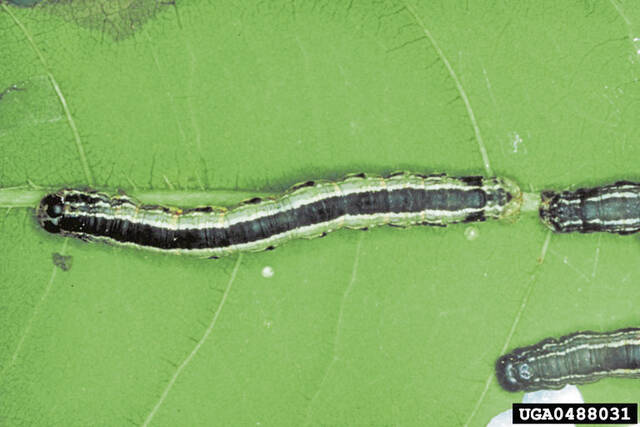What to know about this summer pest: the fall cankerworm
The first major outbreak of the fall cankerworm in Southwestern Pennsylvania since 1977 is underway.
The native pest eats the budding leaves off trees in the early spring and is expected to be in the region until mid-late June.
The cankerworm infested the trees in Somerset County last summer, eating the leaves of large trees and leaving many of their top branches bare.
Mandy Smith, Master Gardener coordinator at the Penn State Extension office in Greensburg, said despite the unusually large presence of the pest, the trees are able to recover their leaves without permanent damage.
“They are pests,” Smith said. “However, they’re not horrible pests.”
Fall cankerworms hatch as larvae in mid-April and early May and emerge on branches of trees with new leaves.
“There’s going to be major defoliation,” Smith said. “However, then the tree will put out new fresh leaves as the season progresses.”
In mid-June, the worms will begin the pupating or cocooning phase and drop from the branches of trees on silken threads. They then burrow into the ground before emerging as geometer moths in the fall.
“The moths themselves are not as detrimental as the larva stage because they don’t eat leaves,” Smith said. “But if you don’t want cankerworms, you want to keep an eye out for the eggs.”
In the fall, the wingless female will climb a tree to mate with the winged male before laying eggs in the tree’s branches. Putting barriers around prized trees during this time may prevent cankerworms from emerging in the spring. The time for spraying the pests with biological insecticides has passed, as it is most effective when the larvae have just hatched.
However, as the period for metamorphosis draws closer, cankerworms will slowly start to disappear as the summer continues.
The worms are also the natural prey of other insects. Ground beetles and telenomus alsophilae, a tiny parasitoid wasp that lays its eggs inside of the larvae, have contributed to preventing the spread of the fall cankerworm.
There have only been four major outbreaks of the worm in Pennsylvania since 1932.
While a report from the Entomological Society of America states that outbreaks of fall cankerworms often coincide with outbreaks of other defoliator species, Michael Doucette, a service forester at the Pennsylvania Department of Conservation and Natural Resources Bureau of Forestry, said cankerworms “just pop out when they pop out.”
“It’s not something that’s unexpected,” Doucette said. “They’ll just suddenly explode, and then they’re gone.”
Haley Moreland is a TribLive staff writer. You can reach Haley at hmoreland@triblive.com.
Remove the ads from your TribLIVE reading experience but still support the journalists who create the content with TribLIVE Ad-Free.

